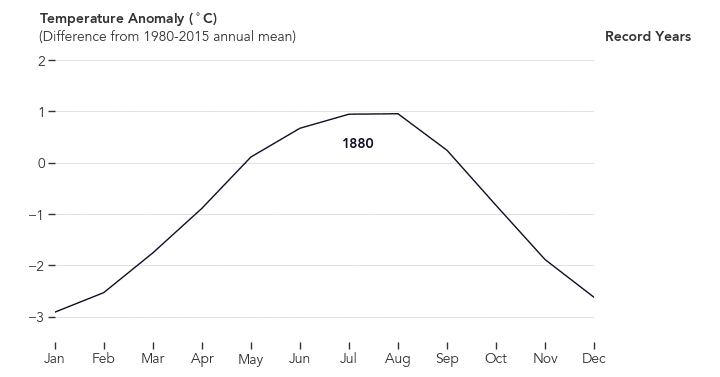Archive for the ‘Global Health’ Category
WHO-UNICEF: One in four health care facilities around the world lacks basic water services, impacting over 2 billion people
Saturday, April 6th, 2019
The WHO/UNICEF JMP report, WASH in Health Care Facilities, is the first comprehensive global assessment of water, sanitation and hygiene (WASH) in health care facilities. It also finds that 1 in 5 health care facilities has no sanitation service*, impacting 1.5 billion people. The report further reveals that many health centres lack basic facilities for hand hygiene and safe segregation and disposal of health care waste.
These services are crucial to preventing infections, reducing the spread of antimicrobial resistance and providing quality care, particularly for safe childbirth.
“Water, sanitation and hygiene services in health facilities are the most basic requirements of infection prevention and control, and of quality care. They are fundamental to respecting the dignity and human rights of every person who seeks health care and of health workers themselves,†said António Guterres, United Nations Secretary-General. “I call on people everywhere to support action for WASH in all health care facilities. This is essential to achieve the Sustainable Development Goals.â€
The WHO/UNICEF JMP report found that just half – 55 per cent – of health care facilities in Least Developed Countries (LDCs) had basic water services. It is estimated that 1 in 5 births globally takes place in LDCs, and that, each year, 17 million women in these countries give birth in health centres with inadequate water, sanitation and hygiene.
“When a baby is born in a health facility without adequate water, sanitation and hygiene, the risk of infection and death for both the mother and the baby is high,†said UNICEF Executive Director Henrietta Fore. “Every birth should be supported by a safe pair of hands, washed with soap and water, using sterile equipment, in a clean environment.â€
In an accompanying report, Water, sanitation, and hygiene in health care facilities: Practical steps to achieve universal access for quality care, WHO and UNICEF researchers note that more than 1 million deaths each year are associated with unclean births. Infections account for 26% of neonatal deaths and 11% of maternal mortality.
“Imagine giving birth or taking your sick child to a health centre with no safe water, toilets or handwashing facilities,†said Dr Tedros Adhanom Ghebreyesus, WHO Director-General. “That’s the reality for millions of people every day. No one should have to do that, and no health worker should have to provide care in those circumstances. Ensuring that all health care facilities have basic water, sanitation and hygiene services is essential for achieving a healthier, safer, fairer world.â€
At the 2019 World Health Assembly to be held in May, governments will debate a resolution on Water, Sanitation and Hygiene in Health Care Facilities which was unanimously approved by the WHO Executive Board earlier this year.
The WHO and UNICEF Practical Steps report provides details on eight actions governments can take to improve the WASH services in health care facilities including establishing national plans and targets, improving infrastructure and maintenance and engaging communities. These actions and resulting improvements in WASH services can yield dramatic returns on investment in the form of improved maternal and newborn health, preventing antimicrobial resistance, stopping disease outbreaks and improving quality of care.
According to UNICEF, 7,000 newborn babies died every day in 2017, mostly from preventable and treatable conditions including infections like sepsis. As part of its Every Child Alive Campaign, UNICEF is calling for governments and authorities to make sure every mother and baby have access to affordable, quality care.Â
Last year, Fore and Dr Tedros called on countries to strengthen their primary health care systems as an essential step toward achieving universal health coverage.
–
Italy: Parents risk being fined up to €500 (£425; $560) if they send their unvaccinated children to school.
Tuesday, March 12th, 2019“…..The new law came amid a surge in measles cases – but Italian officials say vaccination rates have improved since it was introduced.
Under Italy’s so-called Lorenzin law – named after the former health minister who introduced it – children must receive a range of mandatory immunisations before attending school. They include vaccinations for chickenpox, polio, measles, mumps, and rubella.
Children up to the age of six years will be excluded from nursery and kindergarten without proof of vaccination under the new rules.
Those aged between six and 16 cannot be banned from attending school, but their parents face fines if they do not complete the mandatory course of immunisations…..”
Two damning reports on the negative impact of climate change on global health……
Thursday, February 21st, 2019“…..another dire warning about climate change, released yesterday in The Lancet, the New York Times reported. The report comes on the heels of the US government’s National Climate Assessment, which dropped on Black Friday—and echoes many of its findings. The 2 reports offer the gravest warning yet about the myriad, interconnected health risks of climate change….”
WHO: Ten threats to global health in 2019
Tuesday, January 22nd, 2019The world is facing multiple health challenges. These range from outbreaks of vaccine-preventable diseases like measles and diphtheria, increasing reports of drug-resistant pathogens, growing rates of obesity and physical inactivity to the health impacts of environmental pollution and climate change and multiple humanitarian crises.
To address these and other threats, 2019 sees the start of the World Health Organization’s new 5-year strategic plan – the 13th General Programme of Work. This plan focuses on a triple billion target: ensuring 1 billion more people benefit from access to universal health coverage, 1 billion more people are protected from health emergencies and 1 billion more people enjoy better health and well-being. Reaching this goal will require addressing the threats to health from a variety of angles.
Here are 10 of the many issues that will demand attention from WHO and health partners in 2019.
Air pollution and climate change
Nine out of ten people breathe polluted air every day. In 2019, air pollution is considered by WHO as the greatest environmental risk to health. Microscopic pollutants in the air can penetrate respiratory and circulatory systems, damaging the lungs, heart and brain, killing 7 million people prematurely every year from diseases such as cancer, stroke, heart and lung disease. Around 90% of these deaths are in low- and middle-income countries, with high volumes of emissions from industry, transport and agriculture, as well as dirty cookstoves and fuels in homes.The primary cause of air pollution (burning fossil fuels) is also a major contributor to climate change, which impacts people’s health in different ways. Between 2030 and 2050, climate change is expected to cause 250 000 additional deaths per year, from malnutrition, malaria, diarrhoea and heat stress.In October 2018, WHO held its first ever Global Conference on Air Pollution and Health in Geneva. Countries and organizations made more than 70 commitments to improve air quality. This year, the United Nations Climate Summit in September will aim to strengthen climate action and ambition worldwide. Even if all the commitments made by countries for the Paris Agreement are achieved, the world is still on a course to warm by more than 3°C this century.
Noncommunicable diseases
Noncommunicable diseases, such as diabetes, cancer and heart disease, are collectively responsible for over 70% of all deaths worldwide, or 41 million people. This includes 15 million people dying prematurely, aged between 30 and 69.Over 85% of these premature deaths are in low- and middle-income countries. The rise of these diseases has been driven by five major risk factors: tobacco use, physical inactivity, the harmful use of alcohol, unhealthy diets and air pollution. These risk factors also exacerbate mental health issues, that may originate from an early age: half of all mental illness begins by the age of 14, but most cases go undetected and untreated – suicide is the second leading cause of death among 15-19 year-olds.
Among many things, this year WHO will work with governments to help them meet the global target of reducing physical inactivity by 15% by 2030 – through such actions as implementing the ACTIVE policy toolkit to help get more people being active every day.
Global influenza pandemic
The world will face another influenza pandemic – the only thing we don’t know is when it will hit and how severe it will be. Global defences are only as effective as the weakest link in any country’s health emergency preparedness and response system.
WHO is constantly monitoring the circulation of influenza viruses to detect potential pandemic strains: 153 institutions in 114 countries are involved in global surveillance and response.
Every year, WHO recommends which strains should be included in the flu vaccine to protect people from seasonal flu. In the event that a new flu strain develops pandemic potential, WHO has set up a unique partnership with all the major players to ensure effective and equitable access to diagnostics, vaccines and antivirals (treatments), especially in developing countries.
Fragile and vulnerable settings
Fragile settings exist in almost all regions of the world, and these are where half of the key targets in the sustainable development goals, including on child and maternal health, remains unmet.WHO will continue to work in these countries to strengthen health systems so that they are better prepared to detect and respond to outbreaks, as well as able to deliver high quality health services, including immunization.
Antimicrobial resistance
The development of antibiotics, antivirals and antimalarials are some of modern medicine’s greatest successes. Now, time with these drugs is running out. Antimicrobial resistance – the ability of bacteria, parasites, viruses and fungi to resist these medicines – threatens to send us back to a time when we were unable to easily treat infections such as pneumonia, tuberculosis, gonorrhoea, and salmonellosis. The inability to prevent infections could seriously compromise surgery and procedures such as chemotherapy.
Resistance to tuberculosis drugs is a formidable obstacle to fighting a disease that causes around 10 million people to fall ill, and 1.6 million to die, every year. In 2017, around 600 000 cases of tuberculosis were resistant to rifampicin – the most effective first-line drug – and 82% of these people had multidrug-resistant tuberculosis.
Drug resistance is driven by the overuse of antimicrobials in people, but also in animals, especially those used for food production, as well as in the environment. WHO is working with these sectors to implement a global action plan to tackle antimicrobial resistance by increasing awareness and knowledge, reducing infection, and encouraging prudent use of antimicrobials.
Ebola and other high-threat pathogens
This shows that the context in which an epidemic of a high-threat pathogen like Ebola erupts is critical – what happened in rural outbreaks in the past doesn’t always apply to densely populated urban areas or conflict-affected areas.
At a conference on Preparedness for Public Health Emergencies held last December, participants from the public health, animal health, transport and tourism sectors focussed on the growing challenges of tackling outbreaks and health emergencies in urban areas. They called for WHO and partners to designate 2019 as a “Year of action on preparedness for health emergencies”.
WHO’s R&D Blueprint identifies diseases and pathogens that have potential to cause a public health emergency but lack effective treatments and vaccines. This watchlist for priority research and development includes Ebola, several other haemorrhagic fevers, Zika, Nipah, Middle East respiratory syndrome coronavirus (MERS-CoV) and Severe Acute Respiratory Syndrome (SARS) and disease X, which represents the need to prepare for an unknown pathogen that could cause a serious epidemic.
Weak primary health care
Primary health care can meet the majority of a person’s health needs of the course of their life. Health systems with strong primary health care are needed to achieve universal health coverage.Yet many countries do not have adequate primary health care facilities. This neglect may be a lack of resources in low- or middle-income countries, but possibly also a focus in the past few decades on single disease programmes. In October 2018, WHO co-hosted a major global conference in Astana, Kazakhstan at which all countries committed to renew the commitment to primary health care made in the Alma-Ata declaration in 1978.
In 2019, WHO will work with partners to revitalize and strengthen primary health care in countries, and follow up on specific commitments made by in the Astana Declaration.
Vaccine hesitancy
Measles, for example, has seen a 30% increase in cases globally. The reasons for this rise are complex, and not all of these cases are due to vaccine hesitancy. However, some countries that were close to eliminating the disease have seen a resurgence.The reasons why people choose not to vaccinate are complex; a vaccines advisory group to WHO identified complacency, inconvenience in accessing vaccines, and lack of confidence are key reasons underlying hesitancy. Health workers, especially those in communities, remain the most trusted advisor and influencer of vaccination decisions, and they must be supported to provide trusted, credible information on vaccines.
In 2019, WHO will ramp up work to eliminate cervical cancer worldwide by increasing coverage of the HPV vaccine, among other interventions. 2019 may also be the year when transmission of wild poliovirus is stopped in Afghanistan and Pakistan. Last year, less than 30 cases were reported in both countries. WHO and partners are committed to supporting these countries to vaccinate every last child to eradicate this crippling disease for good.
Dengue
A high number of cases occur in the rainy seasons of countries such as Bangladesh and India. Now, its season in these countries is lengthening significantly (in 2018, Bangladesh saw the highest number of deaths in almost two decades), and the disease is spreading to less tropical and more temperate countries such as Nepal, that have not traditionally seen the disease.An estimated 40% of the world is at risk of dengue fever, and there are around 390 million infections a year. WHO’s Dengue control strategy aims to reduce deaths by 50% by 2020.
HIV
However, the epidemic continues to rage with nearly a million people every year dying of HIV/AIDS. Since the beginning of the epidemic, more than 70 million people have acquired the infection, and about 35 million people have died. Today, around 37 million worldwide live with HIV. Reaching people like sex workers, people in prison, men who have sex with men, or transgender people is hugely challenging. Often these groups are excluded from health services. A group increasingly affected by HIV are young girls and women (aged 15–24), who are particularly at high risk and account for 1 in 4 HIV infections in sub-Saharan Africa despite being only 10% of the population.This year, WHO will work with countries to support the introduction of self-testing so that more people living with HIV know their status and can receive treatment (or preventive measures in the case of a negative test result). One activity will be to act on new guidance announced In December 2018, by WHO and the International Labour Organization to support companies and organizations to offer HIV self-tests in the workplace.
Small molecule therapeutics (SMTs) polymer nanoparticles (NP) and have been proposed as potential prereferral treatments for snakebite
Saturday, December 22nd, 2018Bulfone TC, Samuel SP, Bickler PE, Lewin MR.
Developing Small Molecule Therapeutics for the Initial and Adjunctive Treatment of Snakebite.
J Trop Med. 2018;2018:4320175. Published 2018 Jul 30. doi:10.1155/2018/4320175
- Snakebite envenomation is a neglected tropical disease that causes more than 100,000 deaths every year
- SMTs represent a potentially useful adjunctive therapy to antivenoms, the current mainstay of care for symptomatic snakebite.
Engineered nanoparticles bind elapid snake venom toxins and inhibit venom-induced dermonecrosis
- Jeffrey O’Brien,
- Shih-Hui Lee,
- José María Gutiérrez,
- Kenneth J. Shea

- Published: October 4, 2018
- https://doi.org/10.1371/journal.pntd.0006736
“…..The work describes hope for treatment of snakebite, a broad-spectrum antivenom comprised polymer nanoparticles (NPs) engineered to sequester the major protein toxins in elapid snakes. The stable, low-cost NPs can be administered subcutaneously immediately after the bite at the site of envenoming to halt or reduce the extent of local tissue damage and mitigate the systemic distribution of toxins post-envenoming…..”
Vanuatu: Vaccines Delivered by Drone
Friday, December 21st, 2018
“…..with support from Unicef, the Australian government and the Global Fund to Fight AIDS, Tuberculosis and Malaria, began its drone program on Monday. It will initially serve three islands but may be expanded to
many more..…”
 …”
…”
Taxing red and processed meat according to its health impacts: New research
Monday, November 12th, 2018Springmann M, Mason-D’Croz D, Robinson S, Wiebe K, Godfray HCJ, Rayner M, et al. (2018) Health-motivated taxes on red and processed meat: A modelling study on optimal tax levels and associated health impacts. PLoS ONE 13(11): e0204139. https://doi.org/10.1371/journal.pone.0204139
“……Including the social health cost of red and processed meat consumption in the price of red and processed meat could lead to significant health and environmental benefits, in particular in high and middle-income countries. The optimal tax levels estimated in this study are context-specific and can complement the simple rules of thumb currently used for setting health-motivated tax levels...….”
The United Nations: 13 million people in Yemen are facing starvation.
Wednesday, October 17th, 2018People in sub-Saharan African can expect to live for 11 years longer than the generation that went before them.
Sunday, September 30th, 2018- Factors including recovery from HIV epidemics, reductions in child mortality, improved nutrition and access to drinking water have driven life expectancy from 49.7 years in 1990 to 60.7 years in 2017.
- The number of years children typically spend in school has also increased across the region, growing 14% over the past decade.

A recent World Bank report concluded, rising temperatures in SE Asia could diminish the living standards of 800 million people.
Wednesday, July 18th, 2018“……a recent analysis of climate trends in several of South Asia’s biggest cities found that if current warming trends continued, by the end of the century, wet bulb temperatures — a measure of heat and humidity that can indicate the point when the body can no longer cool itself — would be so high that people directly exposed for six hours or more would not survive……..”







